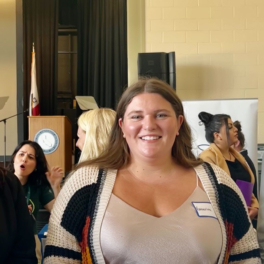

Exploring Student Loan Strategies
Feeling overwhelmed by student loan debt? You’re not alone. Millions of Americans struggle with this burden. However, there are strategies available to help you manage your existing debt and explore potential forgiveness options.
Consider Income-Driven Repayment (IDR) Plans
IDR Plans, such as the Saving on a Valuable Education (SAVE) plan, can be a viable option for those struggling with high student loan debt. These plans scale monthly payments to your current income and family size. In some cases, this offers meaningful relief compared to traditional repayment plans.
To calculate your monthly loan payment, the SAVE plan first calculates your “discretionary income”, which is defined as excess earnings over 225% of the federal poverty line for your family size. Income is pulled from your tax return and calculated on an annual basis, which creates additional strategies to optimize your income over multiple tax years to control your repayment schedule.
One major drawback to the SAVE plan in particular is that payments apply to interest first. So, you might not see a significant reduction in the principal balance early on. In some cases, it’s possible that no portion of your calculated loan payment will pay down principal. If that is the case, if such a person ever opts out of the SAVE plan, they could end up owing the same as their starting balance.
To help escape the perpetual debt loop for low income individuals, after 20 years of qualifying payments under SAVE, the remaining loan balance is typically forgiven! This forgiveness timeline shortens to 10 years for those working in non-profit organizations. Even better, the clock for the 10 or 20 year period starts when you began making loan payments, not when you are first enrolled in the SAVE plan. For instance, a borrower that began making payments in 2015, would be in their 10th payment year in 2024 even if they did not enroll in the SAVE plan until 2023.
Seek Tailored Strategies for Individual Needs
If you have student loans, now is a great time for a fresh look at your available options. In practice, some individuals who did not think they would ever qualify for a student loan reduction plan found themselves pleasantly surprised.
Case Study 1: Education Loans Taken Out for their Children
A client had been making payments on loans that they took out to pay for their children’s undergraduate degrees. Coincidentally, this client works for a non-profit and they found out they are eligible for student loan forgiveness in 10yrs. After some other consolidation strategies, this client will stand to SAVE approximately $40,000 over the remaining life of the student loans.
Case Study 2: Loans for High Earners
A married couple has been steadily earning high wages, but they are saddled with meaningful educational debt. When exploring tax strategies, their tax-preparer found that they can exercise an option to change their filing status from married filing jointly to married filing separately. This tax strategy, allowed only his income to count when evaluating the “discretionary income” threshold of the SAVE Plan. This one move significantly lowered their loan payments in that tax year. It’s important to understand that such a move was under the guidance of a tax professional, and that any major financial changes should be done with the counsel of a trusted advisor.
Stay Aware of Proposed Updates to Loan Forgiveness
If these last few years have shown us anything, it is that the student loan landscape is dynamic. Recently, President Biden proposed new changes to expand relief opportunities:
- Eliminating $20,000 of unpaid interest on borrowers balances regardless of income
- Borrowers in the SAVE plan making less than $120k would be eligible for broader forgiveness
- Automatic forgiveness for eligible borrowers
- Cancellation of debt for borrowers that entered repayment for undergrad loans 20 years ago and still haven’t repaid (25yrs for graduate school)
- Relief to borrowers at high risk of default and are burdened with medical expenses, and those that attended universities that did not provide students with “sufficient financial value”
While these proposed changes are merely proposed, they highlight a tectonic shift in the realm of student loans. These changes are also not without scrutiny, and while there is no immediate threat, the future of federal loan forgiveness programs remains uncertain.
If you have student debt, we encourage you to seek professional guidance. Navigating IDR plans and other strategies can be complex. Don’t hesitate to seek help from a qualified financial planner or student loan specialist.
Remember, you are not alone in managing student loan debt. Financial planners and student loan specialists can help you explore options and create a personalized plan to minimize your burden and explore potential forgiveness opportunities.
The information provided herein is for educational purposes only, and should not be construed as advice, including, but not limited to tax, legal, insurance, investment, or retirement advice. For your specific planning needs, please seek the advice of Integris Wealth Management, your tax accountant, attorney, insurance agent, or other professional as appropriate. Investing involves the risk of loss.





